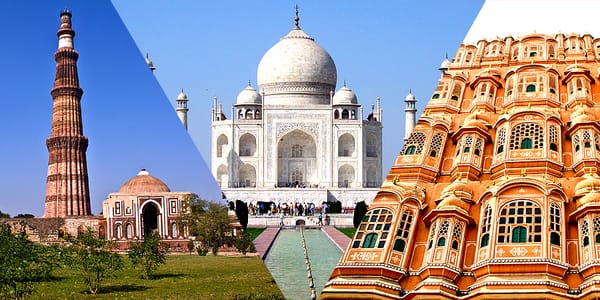Urs Festival Ajmer

Urs Festival Ajmer
One of the main festivals is Urs of Khwaja Moinuddin Chishti which is celebrated in Ajmer. Urs Festival is considered to be one of the most religious festivals and is celebrated in the May month. They visit the hallowed dargah of Sufi saint with the intention to offer him prayers on the actual day of this festival. From all over abroad and India, thousands of pilgrims visit the shrine. Presents the Qawalii in the religious assemblies (mehfils), fatihas (mass prayers) and honor of saint are organize. As blessed food, among the devotees Kheer is distributed. During the Urs the Ajmer’s lakeside town also known Ajmer Sharif comes alive which attracts which attracts thousands of devotees religious, caste etc irrespective.
The seventh month of the Islamic calendar, this festival is celebrated from the 1st to the 6th day of Rajab. The tomb is covered with silk cloth of embroidered and is washed with rosewater and sandalwood paste on the Urs festival’s first day. Regarded as the most auspicious and special is the sixth day of the Urs Festival. The latest Muslim fair that springs up at this time, on sale are silver ornaments, religious objects, embroidered carpets, books and rosaries at the huge fair. At the holy shrine of the Sufi saint, during Urs festival the pilgrims visiting Dargah Sharif for the purpose of seeking the blessings of Khwaja Moinuddin Chishti which make various rich offerings that are famously called as “nazrana”.
One of the most sacred Muslim celebrations is the Urs Festival in Ajmer. After Mecca, the Dargah is considered to be the second most sacred pilgrimage at Ajmer. A descendant of the Chisti family is Urs Festival celebrations are inaugurated by Sajjada Nashin. The cooking of the sacred Kheer or milk pudding that is later distributed to the devotees who throng the grave is an important ritual that marks the celebration of Urs Festival. Conducted in the Mehfil Khana which is located within the Dargah premises are special poetry session of recitation. The anniversary of this festival is celebrated in t he seventh month of the calendar of Islamic lunar.
History of Urs Festival Ajmer
Ajmer’s lakeside city is located in the central Rajasthan which is held by devotees of all communities who call it Holy Ajmer is “Ajmer Sharif” in great reverence. The tomb of the Hazrat Khwaja Moinuddin Chisti was a great preacher of Islamic in the world and was the founder of Islam in India is Khawaja Gharib Nawaz Dargah Ajmer. After seeing the moon in the seventh month of the Islamic calendar Urs Festival is celebrated every year during the first week of the Islamic month of Rajab. From the term “the ultimate meeting of God with a normal human being” is the meaning of “Uroos” which is a term that has been derived. From Persia the Khwaja came and established the fakirs Chishtia order in India.
The place where the mortal remains of Saint which lies buried is the Dargah Sharif in Ajmer and is the largest Muslim fair’s site in India. During the first six days of Rajab which is the seventh month of the Islamic calendar, from all parts of the subcontinent to pay homage to the Khwaja on his Urs was the death anniversary, more than five lakh devotees belonging to unique communities gather. Tomb’s main gate is also called as Nizam Gate, was erected by Shahjahan so it is called Gate of Shahjahani. There is Buland Darwaja after it. Hoisted on it is Urs flag which marks the starting of the Urs Festival. The entire town turns into a grand spectacle with light decorations bustling bazaars all around and flowers during the Urs Festival.
Celebrations of Urs Festival Ajmer
Initiated with the hoisting of a white flag by the Sajjada Nashin on the dargah of Chistis is the Urs Festival which with the accompaniment of music of Jamadi- ul- Akhir on the 25th (month of sixth lunar). The gateway of heaven is Jannati Darwaza is flung open early in the morning on the last day of the sixth month. Washed the tomb with sandalwood paste and rosewater and anointed with perfumes on the first day of Rajab. The Sajjada Nashin performs sound of cracker bursts accompanied by music and the tomb’s ghusal after the usual mehfil and reads are Salamti and Fatiha on the 6th Rajab. Attend the session of special poetry recitation where professional singers sing their poems at night. Organized within the premise of Dargah in the mehfil- khana are Mehfils.
The hall is packed to capacity and sung are Qawwalis. Those women attend the mehfil, there are separate places which is only reserved for womens. Devotees bring gilaph, sandalwood paste, chadars, jasmine and rose flowers, neema and incense as offerings or ‘nazrana’ during Urs Festival, Ajmer. In the night, the mehfil terminates with a mass prayer for the Khwaja’s eternal peace in mankind and particular in general. The helping those in distress as the most prominent forms of devotion towards God and saint preached feeding the hungry which is famously known as Gharib Nawaz. He was buried at Ajmer in a tomb upon death.
How to Reach
By Road: Well connected by road to Jodhpur, Kota, Jaipur, Udaipur and Bikaner. From all over India to Ajmer special buses also available during the Urs Festival.
By Train: Railway station is Ajmer of the Western Railway on the Delhi- Ahmedabad section.
By Air: At Jaipur is the nearest airport.
